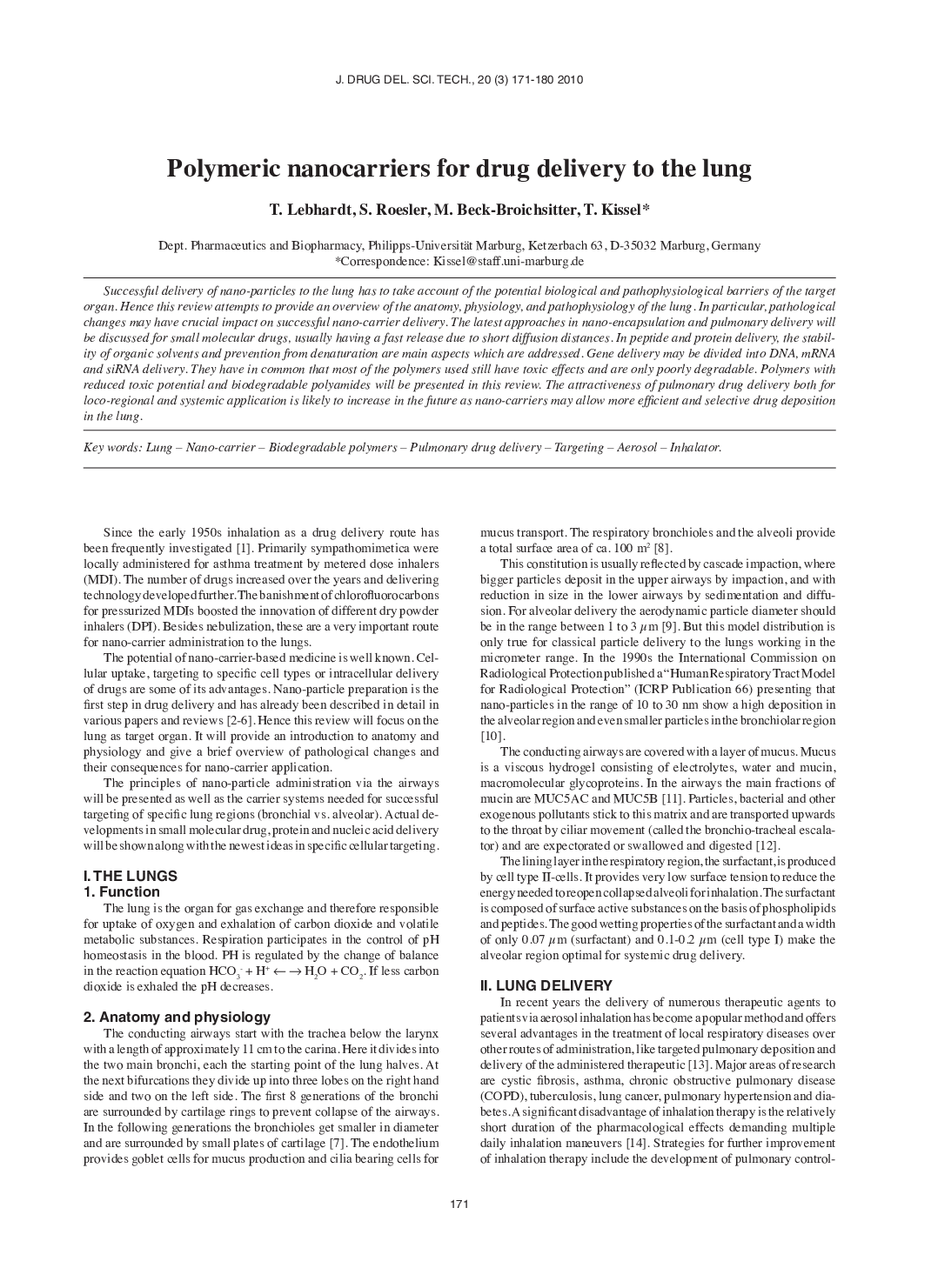| Article ID | Journal | Published Year | Pages | File Type |
|---|---|---|---|---|
| 2483643 | Journal of Drug Delivery Science and Technology | 2010 | 10 Pages |
Successful delivery of nano-particles to the lung has to take account of the potential biological and pathophysiological barriers of the target organ. Hence this review attempts to provide an overview of the anatomy, physiology, and pathophysiology of the lung. In particular, pathological changes may have crucial impact on successful nano-carrier delivery. The latest approaches in nano-encapsulation and pulmonary delivery will be discussed for small molecular drugs, usually having a fast release due to short diffusion distances. In peptide and protein delivery, the stability of organic solvents and prevention from denaturation are main aspects which are addressed. Gene delivery may be divided into DNA, mRNA and siRNA delivery. They have in common that most of the polymers used still have toxic effects and are only poorly degradable. Polymers with reduced toxic potential and biodegradable polyamides will be presented in this review. The attractiveness of pulmonary drug delivery both for loco-regional and systemic application is likely to increase in the future as nano-carriers may allow more efficient and selective drug deposition in the lung.
